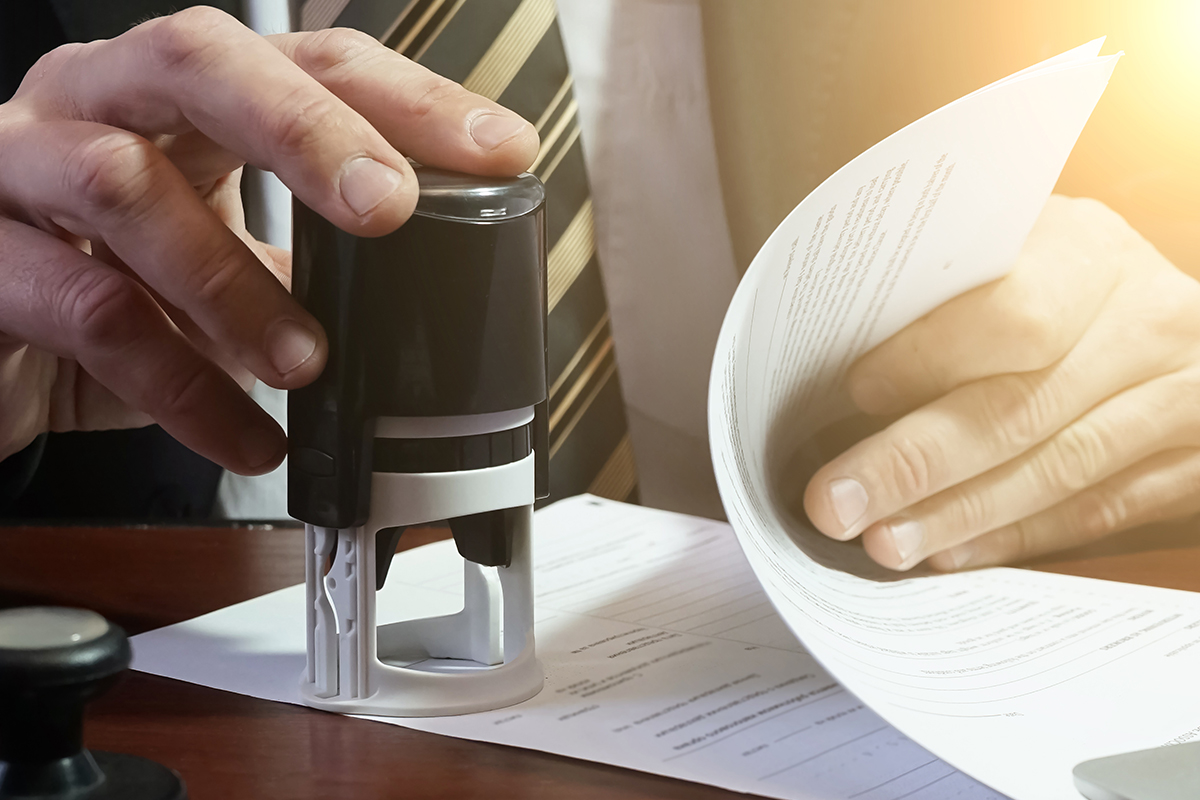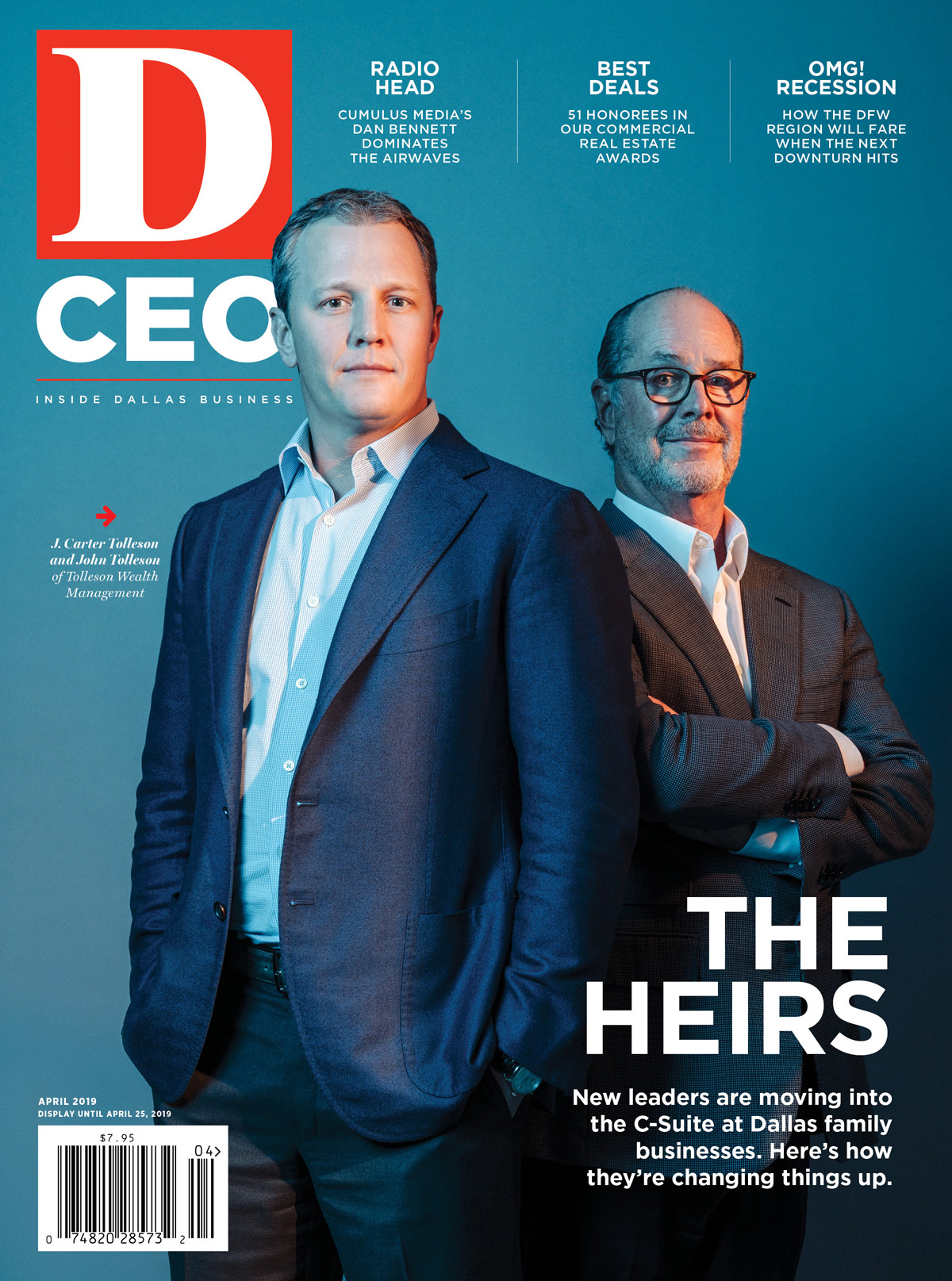Austin typically gets credit among Texas regions for developing intellectual property. But a consultant’s analysis of patents granted in the last five years shows something surprising: Dallas-Fort Worth quietly invents technologies so important, we now take them for granted. If you are reading this report on a computer screen, local inventions helped do the behind-the-scenes work that put it before your eyes, from managing the flow of electricity to zipping words and images to your device.
“DFW has a dozen major areas of invention centered primarily on electronics,” says Joe Chiarella, who runs Patent Index LLC. The region ranks high nationally at creating better ways of storing, processing, and transmitting data. It is a leader as well in creating compounds with thousands of atoms, such as those found in biochemistry, by chemically binding multiple elements together.
Chiarella crunched numbers for D CEO covering 2014 through 2018. “North Texas’ acumen with computers helps it excel in devising new ways of drilling earth and rock, building better airplanes and helicopters, and in creating new equipment for sports training,” he says.
Among the most prolific local patent holders are DFW researchers at oil field services giant Halliburton, who have their names on nearly 750 patents covering more than 50 classes of inventions. “The region’s combination of industries, including energy, aeronautics, and electronics, allows for a synergistic bloom of research and development,” says Darrell Adkins, western hemisphere technology manager in the company’s completion tools division. “The ability to work in different industries creates a cross-pollination of ideas and innovation. We are fortunate to have many strong university systems in DFW that graduate a diverse group of engineering disciplines.”
Planes, Semiconductors, and Telephones
North Texas’ peculiar mix of inventing talents stems from the intertwined growth of three local industries: defense and aerospace, semiconductors, and telecommunications. The 1942 opening of the mile-long Air Force Plant 4 in Fort Worth fostered a concentration of military and aviation companies that by some estimates employ more than 20,000 across the region.
Those companies forged mutually-beneficial relationships with Dallas-based Texas Instruments, which laid the foundation for today’s small, powerful computers with ground-breaking inventions for controlling the flow of information-carrying electrical signals in machinery. “This drove DFW to become a center for military electronics, just as Air Force Plant 4 led the area to be a center for airframes,” says Steve Roemerman, a former TI and Raytheon executive who now runs Dallas-based Lone Star Analysis.
Meanwhile, Rockwell Collins in Richardson devised ways of sending information around the world using microwave technology. When courts forced the breakup of the old AT&T, the plant’s technology chops attracted a Mississippi phone company called MCI, sparking the creation of what became known as the Telecom Corridor. “When telecom was deregulated and the Bell system was broken up, North Texas had the only cadre of talent from outside the Bell ecosystem,” Roemerman says.
Lone Star Analysis builds software for creating and running analytic technologies. Roemerman says North Texas did pioneering work in laser-guided bombs, unmanned aerial vehicles, and training simulators for air crews and radar.
The defense industry often produces inventions on the leading edges of technology that eventually filter down into a number of commercial applications, says David Doyle, a partner in the intellectual property practice at Dallas-based Munck Wilson Mandala. “In some cases,” he says, “the ways in which defense-related inventions are applied to commercial problems can be just as innovative as the original inventions.”
Top DFW Patent Fields
Here’s a look at areas of research where North Texas inventors and companies have secured the largest share of patents issued in the last five years.
| Area of Research | Patents with local inventors/owners | % of National Total |
|---|---|---|
| Airplanes and helicopters | 251 | 16.8 |
| Transmitting digital data | 845 | 16.0 |
| Earth or rock drilling | 994 | 15.0 |
| Converting electric current | 253 | 14.6 |
| Information storage | 249 | 12.2 |
| Regulating electric variables | 115 | 11.4 |
| Valves and taps | 181 | 9.1 |
| Physical-training equipment | 276 | 8.6 |
| Multiplex communication | 759 | 8.4 |
| Telephonic communication | 257 | 8.4 |
| Pulse techniques | 159 | 8.3 |
| Macromolecular compunds | 1,849 | 8.0 |
| Measuring electric variables | 107 | 7.5 |
| Semiconductors | 286 | 6.8 |
Golf Patent Stronghold
There is no agreed-upon method for assessing the value of patents. A quick-and-dirty way is comparing their “forward citations”—essentially the number of times later inventors mention them when seeking patents. “A current patent application will cite past patents to show its similarities, while distinguishing its invention from others have created,” Chiarella says. “By virtue of citing it, you’re tipping your hat.”
Because it takes applications a while to work through the U.S. Patent and Trademark Office, looking at the last five years is more a work in progress than a complete picture. Still, the list of top-cited local patents are generally controlled by names like Halliburton, AT&T, and Texas Instruments.
Except, that is, for golf clubs.
Although giants such as Adidas and Nike have stopped making equipment for the links, patents their DFW inventors filed years ago continue to get disproportionate amounts of attention in their fields. A patent from one of Adidas’ former brands, TaylorMade, got 82 citations for its golf club head with a “stress-reducing feature.”
That business, along with the formerly Plano-based Adams Golf, are among the former Adidas golf brands now controlled by a New York private equity firm, KPS Capital Partners. Along with the late Ben Hogan, who opened a pioneering manufacturing company near Texas Christian University in 1953, few have done more for local golf R&D than Tom Stites, who ran a Fort Worth business that Nike bought and operated for years as “The Oven.” The West Coast giant shuttered the shop in 2016, when it dropped the sport.
“We were the first to track golf balls in flight, [studying] how high they got in the air, their launch angle, and spin rate,” says Stites, who moved to Oklahoma a few years back. “Today, that data is all seen on PGA Tour broadcasts.”
Eye on the Courtroom
No matter what industry they’re aiming at, decisions from the U.S. Supreme Court force inventors and companies to create software-related patents that can survive legal challenges. The Justices’ confusing opinion in 2014’s Alice vs. CLS Bank made it difficult to know what types of inventions based in software are eligible for patents and, by extension, receive a temporary legal monopoly on using them. “Since much of the innovation in the last 10 years has been on the software side, and because we are seeing an increase in serious competitor cases, there is a real premium placed on filing litigation-quality patents that survive” challenges, says Bart Showalter, chair of the intellectual property department at Baker Botts. “The game is now quality, not quantity.”
The Alice issue will remain important, as more inventions come from phones and other smart devices that computers run, or from devices embedded in larger machinery. “We are also filing many more patent applications related to functions that rely on the large availability of large amounts of processing power, such as artificial intelligence and machine learning techniques,” says Doyle of Munck Wilson.
Readying Talent For the Future
For entrepreneurs and the Fortune 500 alike, a growing worry is simply finding the people with technical chops to create cutting-edge inventions to begin with. Local universities now have biomedical engineering programs, but the scientific software talent that’s needed is hard to come by, says Harvey Wiggins, president of Dallas-based Plexon, a developer of instruments and computer systems used in basic neuroscience research. “We need people trained in applied mathematics, statistics, visualization and computational programming in C++,” he says.
Adkins of Halliburton says that although DFW universities are strong, they could improve the skills students need by involving company managers and engineers on their industry advisory boards. Students could also be encouraged to do intern and co-op programs.
Additionally, the region needs to think about the neighborhoods where technical and supply-chain talent of firms like Halliburton go home to after work, he adds. “North Texas needs to provide safe and culturally rich communities for them to live in and thrive,” he says.
Jeff Bounds is a freelance business writer based in Garland.






